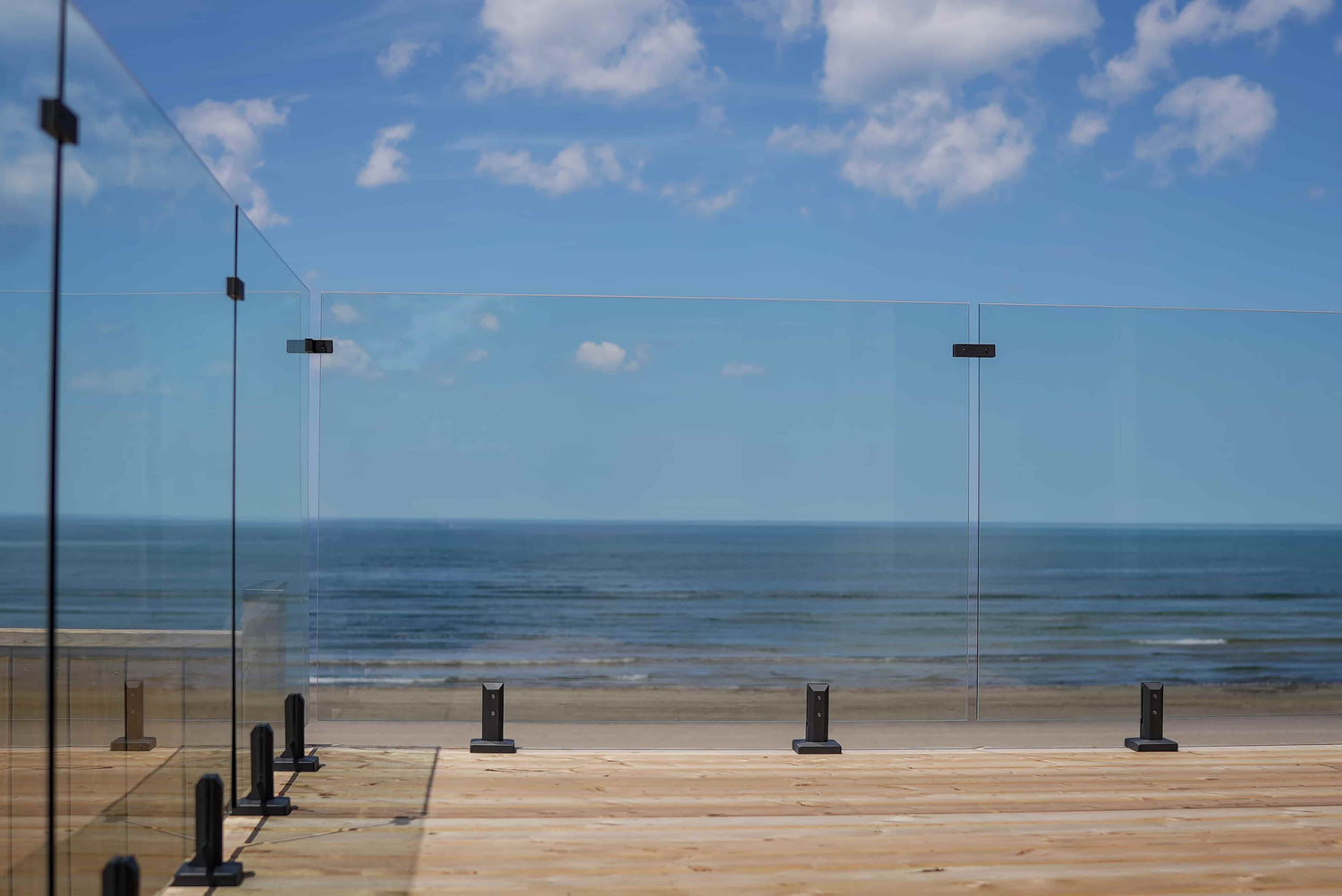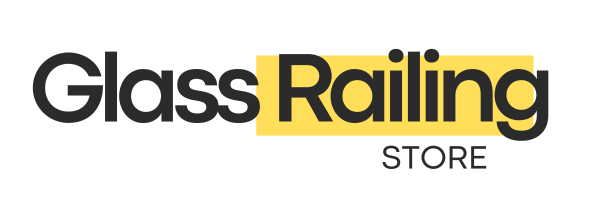West Virginia Building Code for Glass Railings

The striking topography of West Virginia, which ranges from the Ohio River basins at 240 feet above sea level to the 4,863-foot summit of Spruce Knob, presents special difficulties for glass railing constructions. Building code compliance must be carefully considered due to the Mountain State's rough terrain, which includes deep valleys and steep hills. West Virginia operates under the West Virginia State Building Code (WVSBC), adopting the 2018 International Building Code (IBC) for commercial structures and the 2018 International Residential Code (IRC) for residential buildings, effective August 1, 2022. This creates a regulatory framework where glass railing installations must meet safety standards across mountainous terrain.
Understanding West Virginia's Building Code Framework
The West Virginia State Fire Commission, which is in charge of adopting, enforcing, and amending the State Building Code, is in charge of managing the state's building code system. By adopting the 2018 IBC and IRC, the state guarantees uniform requirements for any jurisdictions that decide to use the codes. Enacted in 1989, the WVSBC went into force in 1990. In West Virginia, no other building code regulations may be enforced by local governments, but the WVSBC is mandatory. Communities have the option to adopt the International Property Maintenance Code alone, all of the WVSBC, or just the IPMC.
Glass railing installers profit from this approach since it establishes clear requirements in areas where codes have been established. However, local verification is crucial before starting projects because not all localities enforce building codes. Only nine counties and fifty-two communities and municipalities in West Virginia had embraced the WVSBC as per the most recent surveys. Although major cities like Morgantown, Charleston, and Huntington usually adhere to accepted rules, it's still crucial to confirm with the local building departments.
Glass Railing Safety Requirements and Standards
In jurisdictions that have ratified these codes, West Virginia's glass railing safety regulations are based on IRC rules for residential installations and IBC Section 2407 for commercial applications. Safety glazing that satisfies Class A (ANSI Z97.1) or Category I (16 CFR 1201) requirements must be used on all glass railings. According to load requirements, glass railings must be able to support a uniform weight of 50 pounds per linear foot applied horizontally along the top rail, in addition to a 200-pound concentrated load applied at any location and direction. Where codes are enforced, these regulations guarantee uniform safety standards.
The framework for evaluating railing systems' strength, impact performance, and post-breakage characteristics is provided by ASTM E2353 test procedures. A 4x safety factor, or permissible stresses equivalent to one-fourth of the material's full strength, must be incorporated into glass components. Laminated glass construction with ethylene vinyl acetate (EVA) or polyvinyl butyral (PVB) interlayers is the norm for contemporary glass railing systems. With West Virginia's severe temperatures and mountainous climate, these materials offer exceptional post-breakage performance, which is very crucial.
Professional glass railing systems designed for West Virginia's climate incorporate features that handle temperature variations, wind exposure on mountain slopes, and challenging terrain conditions.

Height and Dimensional Requirements
When established, West Virginia's building codes include precise height requirements. While residential applications permit 36-inch heights for individual housing units, commercial structures must have guard heights of at least 42 inches over nearby pedestrian surfaces. Guards are required for any walking surface that is more than 30 inches above the ground, such as raised patios, decks, balconies, and steps. A 4-inch-diameter spherical cannot pass through any entrance due to opening limits.
|
Application Type |
Minimum Height |
Load Requirements |
Glass Type |
|
Residential (IRC) |
36 inches |
50 lbs./linear foot + 200 lbs. point |
Tempered or laminated |
|
Commercial (IBC) |
42 inches |
Same as residential |
Laminated or tempered |
|
Stairs |
34 inches minimum |
Same as above |
Safety glazing required |
The requirements for top rails pose significant design challenges. Top rails must be joined to structural glass balusters unless laminated glass systems are made to withstand shattering through multi-ply laminated panels that pass ASTM E2353 testing.
West Virginia's mountain climate requires attention to temperature extremes and wind exposure. Quality glass railing installations must consider these mountain conditions during design.
Permitting and Inspection Process
West Virginia's permitting requirements vary significantly depending on whether local jurisdictions have adopted building codes. In communities that have adopted the WVSBC, Installing new glass railings or making major changes usually requires a permit. Complete building permit applications, comprehensive construction plans with glass railing specifications, glass specifications with safety standard certifications, anchoring techniques and structural calculations, and code citations attesting to compliance are all required paperwork in jurisdictions that enforce codes.
To enforce WVSBC regulations, communities must have certified people on staff or under contract. Because of the difficult topography and higher wind loads, mountain locations with extreme exposure conditions frequently need further engineering assessment. According to the National Association of Home Builders, proper code compliance protects both property owners and contractors from liability issues.
Material Specifications and Testing
The mountainous climate of West Virginia necessitates careful consideration of the material criteria for glass railings. Variations in elevation have an impact on wind loads and weather exposure, while temperature fluctuations from valley moderate to mountain extremes generate a variety of performance requirements. For residential systems, the minimum glass thickness is usually 3/8-inch or 1/2-inch; however, depending on exposure conditions, thicker glass may be needed for commercial installations. Every piece of glass needs to be completely tempered or laminated safety glass that has been tested to satisfy modern requirements.
The ASTM E2353 procedures that address static strength, impact resistance, and post-breakage characteristics are the main focus of testing requirements. ASTM-compliant pre-tested components are frequently offered by professional glass railing systems. Each glass panel must have permanent marks that include certification markings, manufacturer identity, thickness, and compliance with safety standards. While marked glass is strongly advised for residential construction, marks are required for commercial applications. West Virginia's mountain environment requires special attention to thermal expansion and wind resistance. The American Architectural Manufacturers Association provides guidelines for mountain installations ensuring long-term performance.

Installation Best Practices for West Virginia Climate
Because of its hilly environment, West Virginia necessitates specific installation methods that can withstand harsh weather conditions and steep terrain. On mountain slopes, installation procedures must take into account fluctuating wind loads, fluctuations in temperature, and difficult anchoring circumstances.
Deflection limitations suitable for West Virginia conditions, with special attention to thermal expansion concerns, and improved structural anchoring in mountainous terrain are among the criteria for the framing system. Glass Association of North America (GANA) rules are followed while establishing block requirements.
Because of West Virginia's mountain weather patterns and temperature fluctuations, weather sealing becomes essential. Extreme temperature fluctuations, challenging construction access, and higher wind exposure are some of the difficulties associated with mountain installations.
Residential vs Commercial Requirements
Where rules are accepted, West Virginia's building code system makes a clear distinction between the requirements for glass railings in residential and commercial settings. Under the IRC, residential applications give single-family homes additional leeway. Commercial applications must adhere to strict IBC regulations, which include complete accessibility compliance and a minimum guard height of 42 inches. Installations around West Virginia are impacted by wind load factors, with high-elevation sites requiring special care.
When choosing glass railing components, take into account West Virginia's unique weather circumstances, such as temperature fluctuations, elevation effects on wind loads, and the challenges of mountain terrain, in addition to the code requirements.
According to the International Code Council, proper glazing systems must account for thermal stress and environmental factors specific to each installation location.
Code Enforcement and Compliance
The special system in West Virginia gives local governments the freedom to decide whether or not to enact and enforce building codes. This creates a patchwork of enforcement across the state, making it crucial to verify local requirements before beginning projects. Code-enforced communities have the advantages of consistent statewide standards, whereas non-enforced communities depend on industry standards and professional best practices.
Professional glass railing professionals understand which jurisdictions enforce codes and can help navigate the varying requirements across different areas of the state. The U.S. Department of Housing and Urban Development emphasizes that building codes serve as minimum safety requirements, and installations in non-code areas often benefit from following these standards voluntarily.
Conclusion
Glass railing regulations in West Virginia are contingent upon local implementation of the 2018 IBC and IRC via the West Virginia State Building Code system. Although building ordinances are not enforced in every community, those that do offer uniform safety requirements for the installation of glass railings throughout the difficult terrain of the Mountain State. Verifying local code enforcement, comprehending West Virginia's distinct voluntary adoption process, collaborating with experts acquainted with the difficulties presented by mountain topography, and adhering to industry best practices irrespective of local enforcement are all components of success. Professional assistance is beneficial to property owners as they navigate the complex regulatory environment of West Virginia.
Frequently Asked Questions
1. Does West Virginia require building permits for glass railing installations?
Only in communities that have adopted the West Virginia State Building Code. Many areas do not enforce building codes, so checking local requirements is essential.
2. What type of glass must be used for railings in West Virginia?
In code-enforcing jurisdictions, all glass railings must use safety glazing meeting either Category I (16 CFR 1201) or Class A (ANSI Z97.1) standards.
3. Can I use frameless glass without a top rail in West Virginia?
Where codes are enforced, only with laminated glass engineered to stay in place when broken. Mountain locations may require additional engineering review.
4. Are there special requirements for mountain installations?
While codes apply uniformly where adopted, mountain installers must consider increased wind loads, temperature extremes, and challenging anchoring conditions.
5. What load requirements must glass railings meet?
In code-enforcing areas, glass railings must withstand 200-pound concentrated loads plus 50-pound per linear foot uniform loads, with a 4x safety factor.
6. How do I know if my area enforces building codes?
Contact your local building department or county office. As of recent surveys, only 9 counties and 52 municipalities had adopted the state building code.
7. Do I need an engineer for mountain installations?
High-elevation or exposed mountain installations often benefit from engineering review, especially in areas without code enforcement where professional standards become more important.
8. What glass thickness is required?
Most residential systems use 3/8-inch or 1/2-inch glass, with mountain installations potentially requiring thicker glass for extreme conditions.
Let customers speak for us

Glass Railing Near You
Discover how The Glass Railing Store has been delivering exceptional service to our customers, thanks to our dedicated and knowledgeable team and their love our glass railing products.







